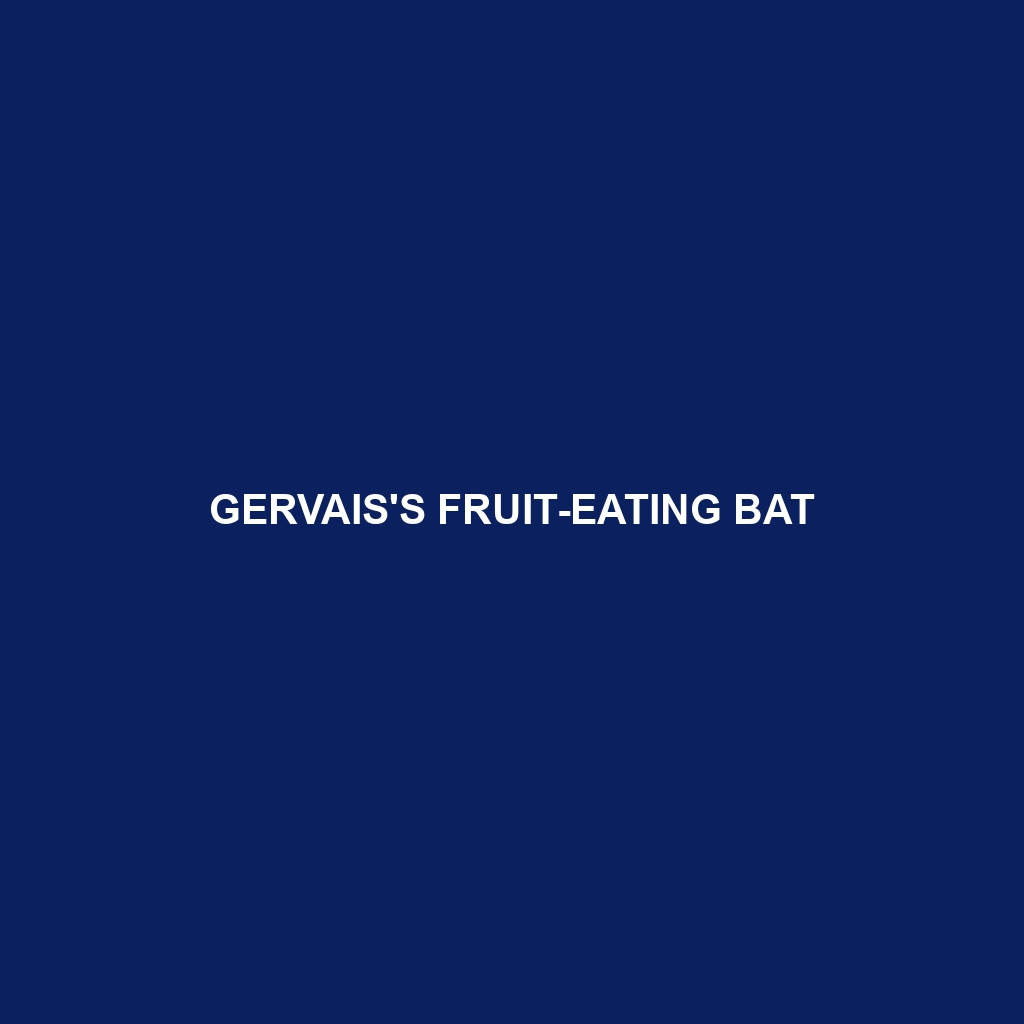Bogota Fruit-eating Bat: A Comprehensive Species Description
Common Name: Bogota Fruit-eating Bat
Scientific Name: Artibeus bogotensis
Habitat: The Bogota Fruit-eating Bat is primarily found in the Andean region of Colombia, particularly around the capital city of Bogotá. This species prefers subtropical and tropical moist forests, including montane forests and lowland rainforests, where it can easily access fruit-bearing plants. The bat typically roosts in a variety of structures, including tree hollows and caves, which provide protection and a stable microclimate that is crucial for its survival.
Physical Characteristics: Adult Bogota Fruit-eating Bats measure about 9 to 12 centimeters in body length with a wingspan ranging from 30 to 35 centimeters. Their fur is generally brown to reddish-brown, providing camouflage among the foliage of their habitat. Distinctive features include large, rounded ears and a short snout, which assist in their echolocation capabilities. Their relatively large size compared to other bats makes them easily recognizable in their natural environment.
Behavior: Bogota Fruit-eating Bats are primarily nocturnal, spending the day roosting in groups. They exhibit social behaviors, often seen grooming each other, which strengthens social bonds within their colonies. During the night, these bats are known for their agile flight, allowing them to navigate the dense vegetation in search of food. They often engage in fruit foraging, showcasing their adaptability in diverse habitats.
Diet: As frugivores, Bogota Fruit-eating Bats primarily feed on a variety of fruits, including figs, berries, and other soft fleshy fruits. Their feeding habits are crucial for seed dispersal, which helps maintain the health of the forest ecosystems. These bats utilize their keen sense of smell and sharp eyesight to locate ripe fruits, playing a significant role in the pollination of various flowering plants as well.
Reproduction: The reproductive season for the Bogota Fruit-eating Bat typically occurs during the wet months, ensuring that food resources are plentiful for the raising of young. Females give birth to a single pup after a gestation period of around 100 days. Maternal care is exhibited, with mothers often forming small roosts with other pregnant females for added safety and support during this critical time.
Conservation Status: The Bogota Fruit-eating Bat is currently classified as “Vulnerable” according to the International Union for Conservation of Nature (IUCN). Habitat loss due to deforestation and urbanization poses significant threats to their populations, making conservation efforts essential for their survival.
Interesting Facts: One fascinating aspect of the Bogota Fruit-eating Bat is its role in the local culture; they are often viewed as symbols of biodiversity in the Andean region. Additionally, they can consume a significant amount of fruit in a single night, aiding in the maintenance of the ecosystems they inhabit.
Role in Ecosystem: The Bogota Fruit-eating Bat plays a vital role in its ecosystem by facilitating seed dispersal and assisting in pollination. By consuming fruits and visiting flowering plants, they help to propagate plant species, contributing to the overall health and diversity of the forest environments where they reside. Their presence is an indicator of a thriving ecosystem, demonstrating the interconnectedness of wildlife and plant life.
This HTML-formatted entry highlights key aspects of the Bogota Fruit-eating Bat, ensuring optimized content for search engines while maintaining informative writing for readers interested in this species.
